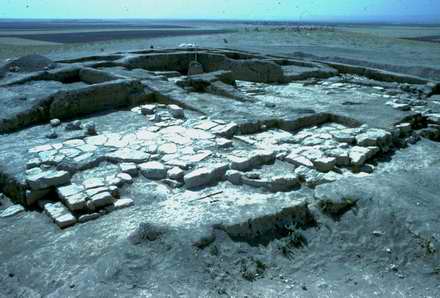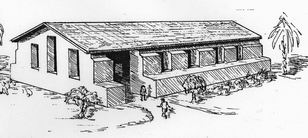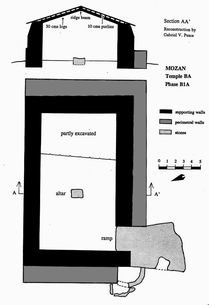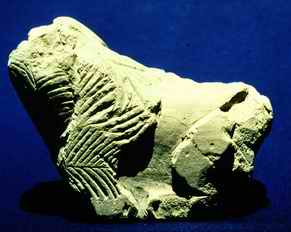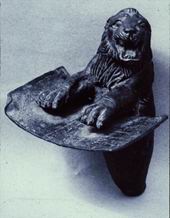Excavations
Our first excavations yielded the remains of a large structure which could readily be interpreted as a temple. We have assigned it the label "Temple BA."Even though it is at the very top of the tell and very near the modern surface, it dates back to about 2400 B.C. or slightly later. Only the lowest courses of the walls and the floor surfaces were still extant.
Because of its high elevation, we knew that the temple had to be built atop some sort of artificial support – which we know now to have been a large terrace (BT), built of stones and mudbrick.
